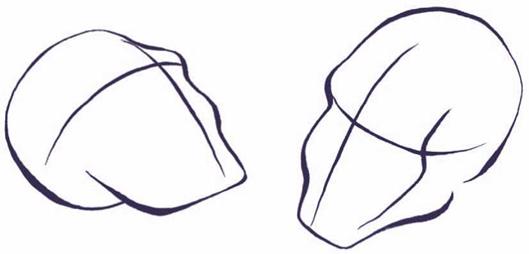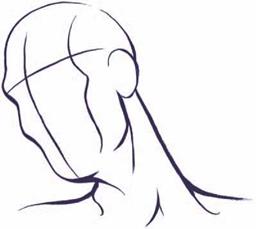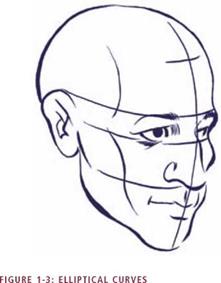by Dan Gheno
Includes information presented in a recent article in Drawing magazine. The study of values is a complicated subject. When trying to draw in a tonal manner, it helps your ability to see value changes on the model if you learn the terminology of the subject.
Values: Each object, whether simple like a sphere or complex like the human figure, is composed of millions of tonal “value” changes. These range from the brightest
bright (where the object most directly faces the light) to the darkest dark (where the object is turned away from the light source).
Halftones: A generic term that refers to all of the value variations within the light side of the model. The halftones are brightest where the form turns most directly toward the light source, and are darkest just before the form falls into complete shadow.
Dark and Light Halftones: To keep things simple, artists should class their halftones into two different categories: “light halftones” and “dark halftones.” Things can go wrong if these two types aren’t kept separate. Some artists make all of their halftones equally dark, creating muddy – looking drawings, while others insist on making their halftones equally bright, creating washed-out drawings. Notice in the Watcher picture (Figure 1.1) that the halftone shapes are distinctly lighter on the side of the forehead most directly facing
|
|
FIGURE 1-1: THE WATCHER, WOMAN

![]()
![]()

 the light source, while they arc dramatically darker near the shadow shapes on the forehead. Try squinting to test the validity of the value renditions. When you squint, the light halftones should fade away and disappear into the overall light shape, while the dark halftones should visually melt into the adjacent, general shadow shapes.
the light source, while they arc dramatically darker near the shadow shapes on the forehead. Try squinting to test the validity of the value renditions. When you squint, the light halftones should fade away and disappear into the overall light shape, while the dark halftones should visually melt into the adjacent, general shadow shapes.
Shadow: As the form of the model turns completely away from the light source, the dark halftone shapes get darker and darker, until the light completely terminates and the big shadow shape begins. Literally called the “terminator” by those who deal with light as a science, this shadow edge can look abrupt and contrasty at times, or soft and fused at other times. It all depends upon the amount of reflected light bouncing into the shadow side of the model.
Reflected Light: Shadows are simply the absence of light. The only reason anything can be seen within the shadow shape is because of reflected light. The light source illuminates not just the model, but also the surrounding environment. The light bounces off the walls, floor, and ceiling, ricocheting into the shadows, and lighting (or filling) the dark side of the model. Indeed, even various body parts reflect light onto the other shadowed parts of the model. One very important rule to know: no reflected light in the shadow shape can be as bright as the direct light hitting the model.
Core Shadow: When the dark side of the face turns away from any source of reflected light, the shadow gradually darkens until the darkest part of the shadow, called the “core shadow,” is reached. This term refers to an area of the form that gets no direct light and
PRO TIP
Makeup Artists are often asked to match a likeness from a real person to an actor, or from one actor to another actor (photo double), or from actor to stunt person. These are some examples of many different situations for a Makeup Artist where shadow shapes and their placement on the face is important.
Movement of the Head: To determine the correct proportions of facial features when the head has moved in different angles, use the vertical and horizontal axes. The centerline is the vertical axis. This line determines the movements determires made by the face from side to side. The horizontal axis defines the brow line.
|
FIGURE 1-2: THE HORIZONTAL AND VERTICAL AXES |
![]()
![]()
 |
If the human head is turned in any direction, the main vertical and horizontal axes become elliptical curves.
|
|
If you were to turn in any direction, the parallel horizontal lines become parallel elliptical curves.
Body and face measurements help the artist correctly achieve the right proportions.
Artist Leonardo da Vinci calculated the parts of the body that could be used as units, and was the first to adapt the head for units of measurement. He used the length of the face, but not the length of the whole head. His methods are still in use today.



